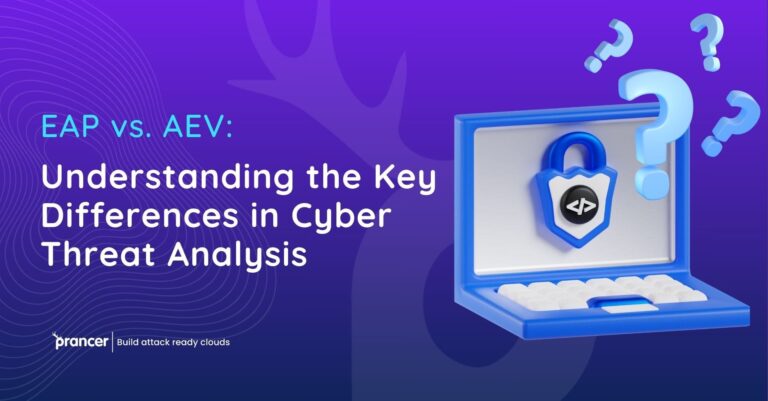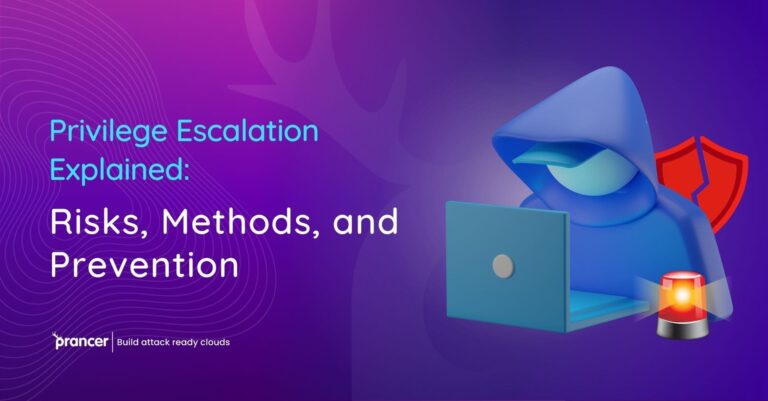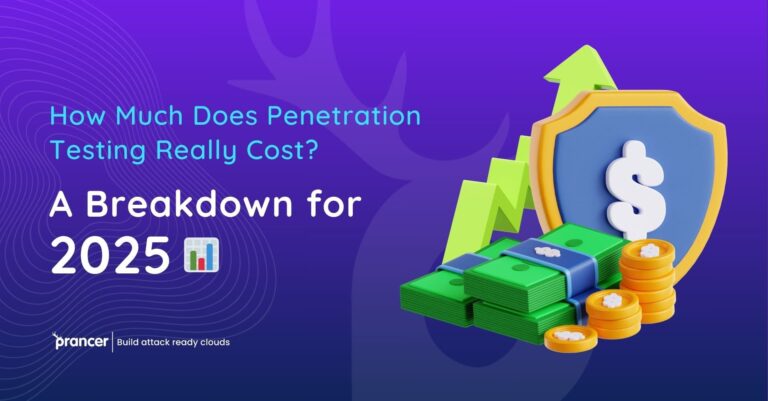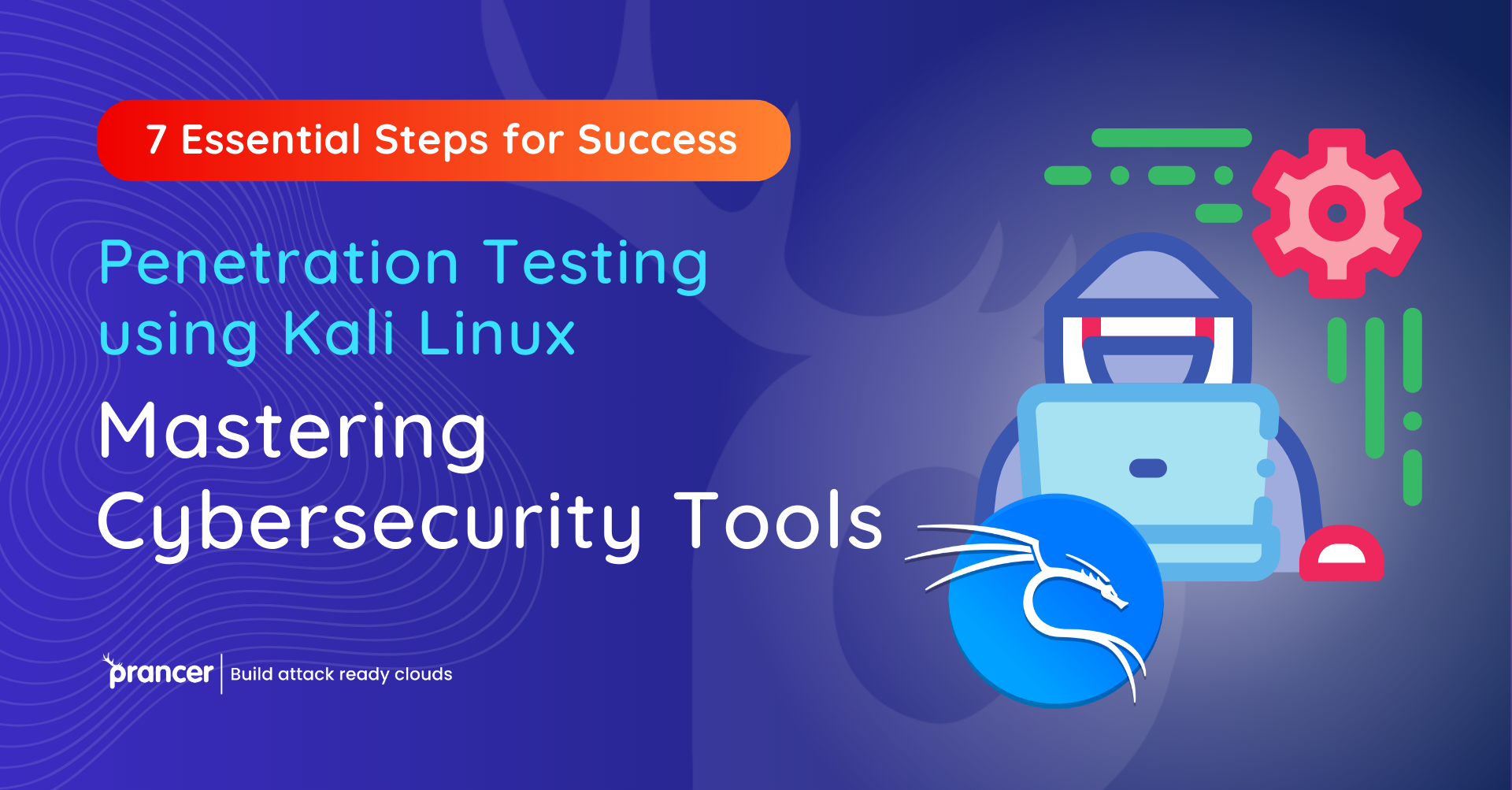




In the dynamic environment of cybersecurity, Penetration testing using Kali Linux has become a modern nitty-gritty for protection digital infrastructures. This in-depth manual provides an analysis of the strategic use of Kali Linux, a potent weapon available to cyber technology professionals. Here at Prancer, we recognize the importance of automated penetration testing when building stronger defenses against current penetrations. In this blog, hints of the complex processes that surround using Kali Linux for robust cybersecurity efforts are developed bringing to light our commitment at Prancer towards out-of-the-box ways in which we can protect digital assets.
However, before delving into the specifics of Penetration testing using Kali Linux it is important to understand what will be discussed. Kali Linux provides a wide range of the tools that are designed for full security audit. In Prancer we are invested in these baselines being mastered as the stepping stone to more advanced things, such is the case of cybersecurity.
Penetration testing using Kali Linux is based on network reconnaissance. In gathering of information, the target system is analyzed to determine its weak points. Prancer uses a number of automated penetration tools that are useful for mapping network frameworks in Kali Linux.
Vulnerability identification is a major component of the penetration testing using Kali Linux. In Prancer, we use the power of Kali Linux tools to identify security vulnerabilities in systems and networks for further analysis.
The area where ‘Penetration testing using Kali Linux’ is truly outstanding is exploitation. This phase simulates attacks on such vulnerabilities. This stage is also where the skills of Prancer in using controlled and ethical hacking methods play a crucial role.
Post-exploitation analysis is the topic of discussion about “Penetration testing using Kali Linux” after a threat actor simulation. The modus operandi for Prancer involves the analysis of data gotten from exploitation with the view to improving security measures.
Good documentation forms a significant part in ‘Penetration testing using Kali Linux’. In Prancer, we document in a precise manner the findings and recommendations to ensure clarity of how he security posture will look like.
Last but not least phase of the ‘Penetration testing using Kali Linux’ methodology is remediation. First of all, Prancer helps its clients to eliminate any vulnerabilities and keeps monitoring the systems in order not to let new breaches happen.
Automated pen testing has a great significance with regards to the methodology presented by penetration Testing using Kali Linux. In Prancer, we incorporate automation to improve efficiency and accuracy that defines the best cyber security practices.
For the complex and dynamic field of cybersecurity, strong defenses against different types of online threats are essential. From the arsenal of tools available to cybersecurity professionals, Kali Linux-based penetration testing has become a leading strategy. This manual provides an extensive focus on the tactical use of Kali Linux, a powerful tool in cyberticking. In fact, Prancer recognizes the crucial role that automated penetration testing plays in building more robust defense against cyber attacks. The objective of this blog is to disclose the mysteries concealed in Kali Linux security and prove that Prancer uses modern approaches while protecting digital assets.
Exploring Penetration Testing with Kali Linux
Utilizing Kali Linux for penetration testing is more than just a job; it’s an intricate art of mastering the digital threatscape and equipping oneself with every tool in one’s arsenal. On the other hand, Kali Linux – a specialized distribution of GNU/Linux developed for such purpose provides numerous tools that are suitable for in-depth security audits.
Prancer’s methodology is based on automated penetration testing, which becomes a pivot when used in conjunction with Kali Linux. Automation is a vital part of Prancer’s digital protection strategy since it enhances efficiency and accuracy in cybersecurity practices.
Kali Linux takes an all-embracing position in cybersecurity. Its large variety of uses from network analysis to vulnerability exploitation gives Prancer the tools that it needs for a holistic security testing regiment.
Automating penetration testing changes the field of cybersecurity. Automated tools enable the testing process and consequently, security assessments more often but also much higher quality.
The use of Kali Linux’s strong toolkit together with automated testing methodologies forms an effective approach to cybersecurity. This combination lies at the heart of Prancer’s policy, demonstrating its dedication to current and superior digital security.
Ethical hacking plays an important role in the cybersecurity strategy of Prancer. Through simulation of real-world attacks in the controlled environments, Prancer detects and solves vulnerabilities before they are used for malicious activities.
In the dynamic environment of cybersecurity, continuous adaptation and development are inevitable. Prancer’s method includes constant modifications and improvements of strategies to keep up with emerging threats, as well as progress in technologies.
Matching Cybersecurity Solutions to Varied Client Requirements.
Given that different clients have differing security needs, Prancer tailors then solutions to ensure each client receives protection specific for his or her application and cloud environment. With this customized technique, all aspects of a client’s digital environment are safe against possible threats.
Prancer’s cybersecurity strategies are based on innovation. Making use of the latest technologies and methodologies, Prancer remains at the cutting edge of cybersecurity whilst offering its clients sophisticated digital safety.
Kali Linux is an integral part in Prancer’s advanced security auditing process. With a vast array of available tools and capabilities, Kali Linux allows Prancer to perform detailed security assessments that leave no vulnerabilities untouched.
Prancer supports the idea of collaboration and community as tools for promoting behavioral change in enhancing cybersecurity practices. Through interacting with other professionals and disseminating information, Prancer makes a contribution to the general store of knowledge in cybersecurity.
To be effective in the fast-paced world of digital threats, it is essential to stay informed and agile. The ability of prancers to continually learn and adapt positions it well in navigating the challenges that plague cybersecurity.
The use of Kali Linux in penetration testing combined with automated techniques makes Prancer one of the leaders in cybersecurity solutions. This method not only provides thorough protection from existing threats but also makes Prancer a pioneer in future cybersecurity developments. By evolving their processes and technologies regularly, Prancer always stays one step ahead of the game in terms of digital security protection ensuring that its clients’ assets remain safe regardless whether it is a fixed scenerio or not.
To conclude, ‘Penetration testing using Kali Linux’ is a critical skill in the field of cyber security. Not only do we use this expertise and couple it with the process of automated penetration testing, our Grey Box approach also sets us ahead in terms on defenses against cyber threats. These seven vital steps guarantee effective utilization of the cybersecurity tools, which helps plans a safe digital era ahead.
